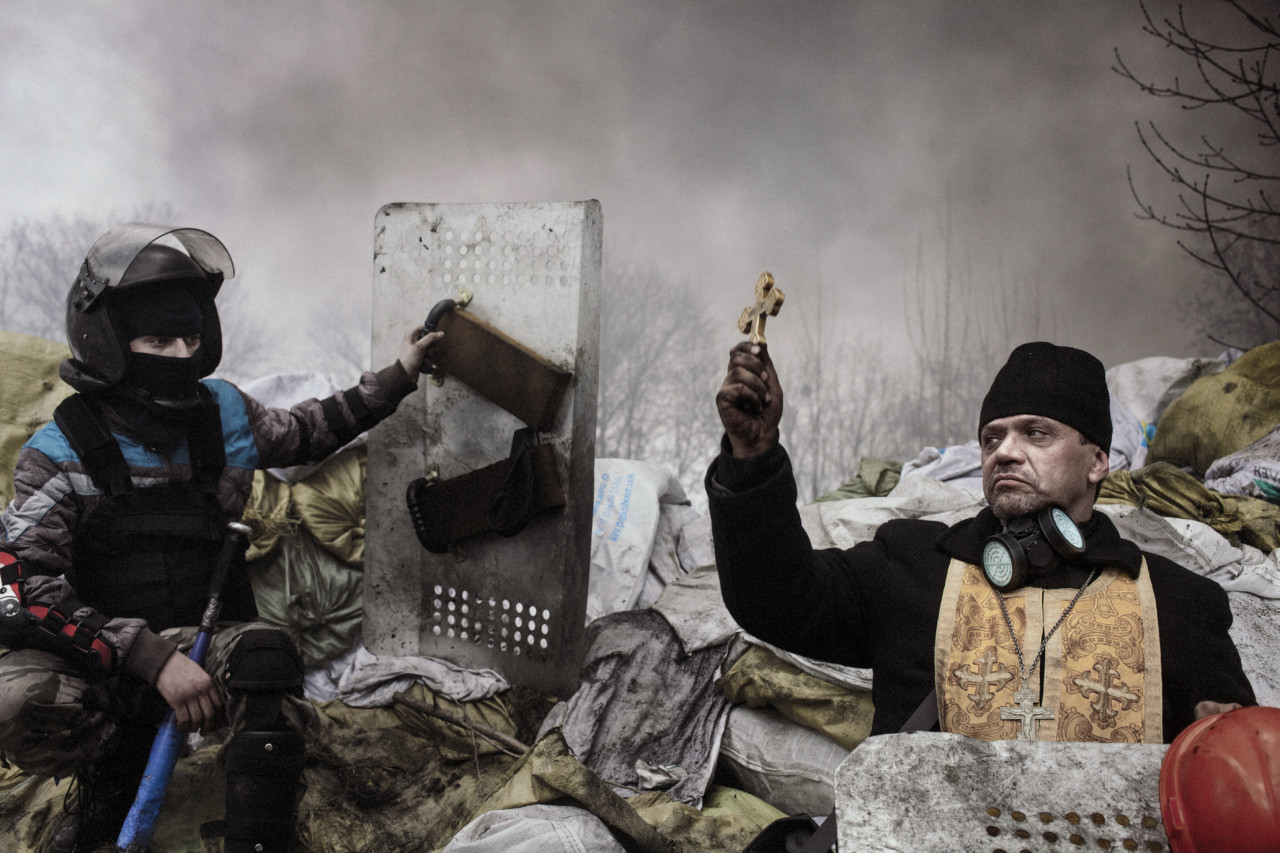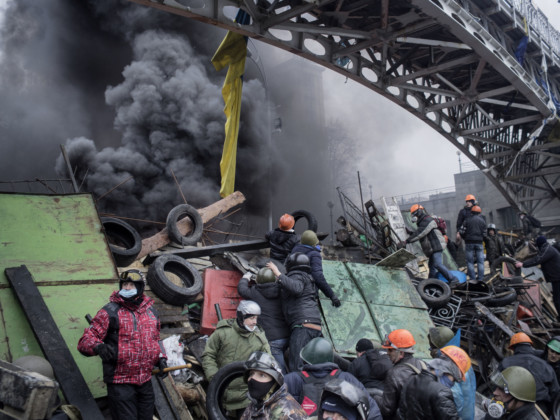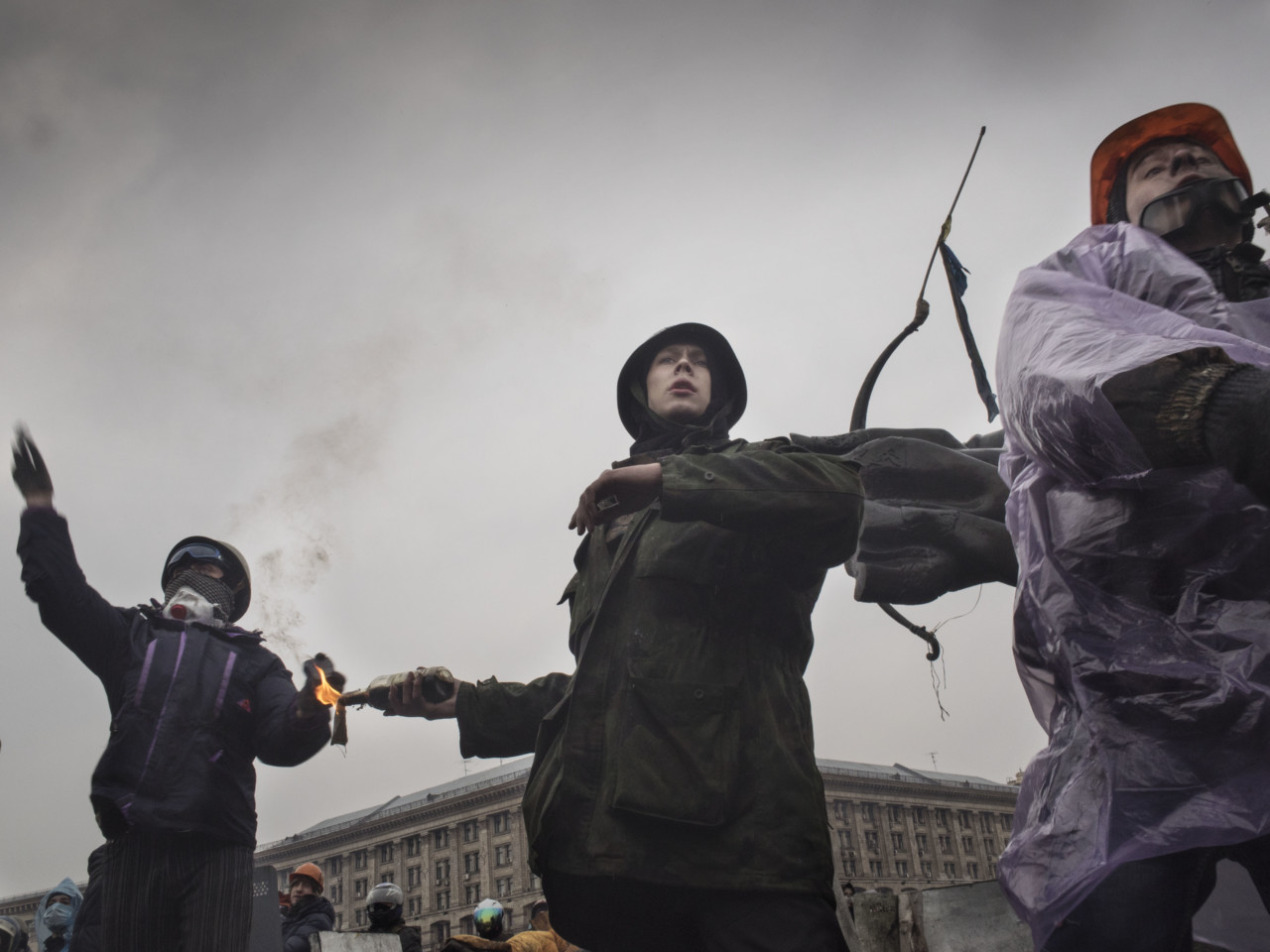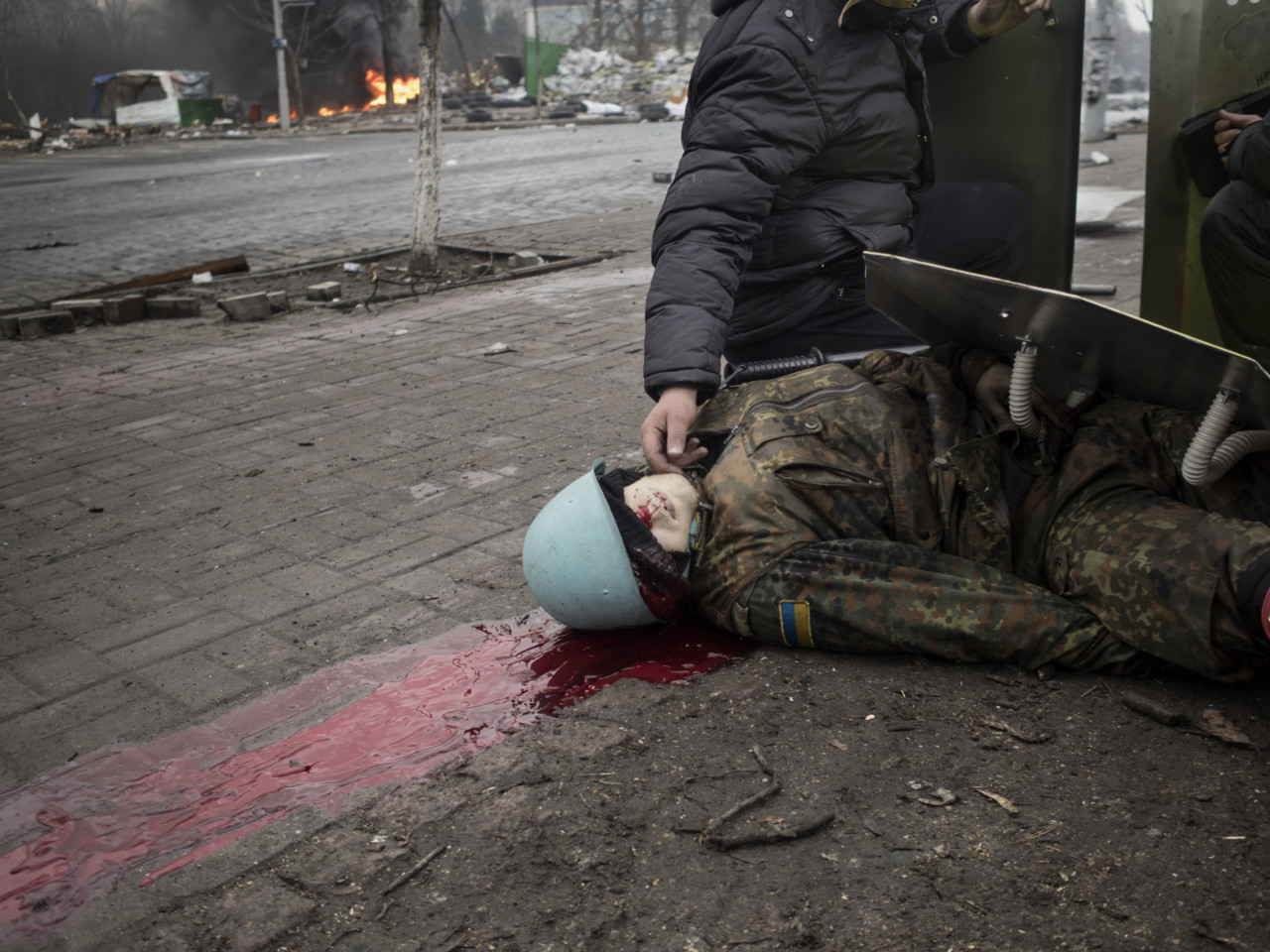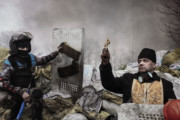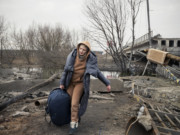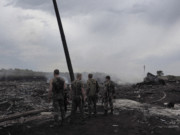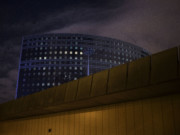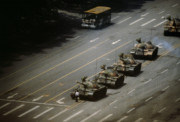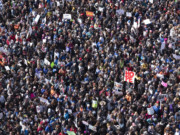Maidan: Five Years On
Jérôme Sessini reflects upon the extreme violence that erupted in Kiev during the protests which culminated in the removal of Ukraine’s president
The 2014 revolution in Ukraine saw the country move toward greater integration with Europe, and away from the influence of Russia, largely as a result of the ‘Euromaidan’ demonstrations. Kiev, Ukraine’s capital, was the scene of months of mass protest throughout the bitter winter of late 2013, through to February 2014. These protests focused upon the city’s Independence Square, popularly referred to as just the Square or ‘Maidan’, which was occupied from November 2014 onward. The popular uprising led eventually to the ousting of pro-Russian president Viktor Yanukovych, and sparked Russia’s annexation of Crimea and the ongoing hostilities in the country’s east. The last three days of the Maidan protests, from February 18 onward, saw a peak in violence and the deaths of at least 70 people, many killed by snipers whose motives are contested even now. Magnum photographer Jérôme Sessini was in the square when the shooting started. During his time in Kiev he captured the protesters’ dogged occupation, the building tensions at Maidan and the standoff’s bloody climax. Here, five years on, he reflects upon his days in the square.
The following article contains graphic still and moving images.
You have said previously that you were unsure about going to Ukraine to cover the protests at first. What was it that led you to go, in the end, in spite of that doubt?
Firstly it was curiosity, I hadn’t travelled to Ukraine before. On top of that there was the encouragement of my colleague Gueorgui Pinkhassov, who was just coming back from Kiev at the time. He played a big part, he gave me energy and motivation to make the trip.
You often speak emphatically about authorship, and about the photographer’s need to admit – and commit – to conveying a story with their work. When you were working in the square how did you feel about Ukraine’s status and the protests themselves?
During the violent events of late February, when snipers opened fire on protesters, everything was totally unpredictable. I woke up the day after my arrival in Kiev, and I was plunged into extreme violence, into one of those rare moments where you find yourself facing death. In such moments you are totally immersed in the present, there is no before, there is no after, just the instant. Only life and death. I trusted my instinct, I became very calm and sharp. I call such times ‘moments of grace’. Maybe I’ve been unconsciously looking for these moments all my life as a photographer.
But in these situations there is no space or time to think. Reflection comes eventually after…
"I had felt, since the very beginning, that the division of Eastern Ukraine would be a bad thing for all Ukrainians. I regret that most of the mass or mainstream media had such a simplistic and binary vision of the issues"
- Jérôme Sessini
With that in mind, and looking back over the work you made, has time changed how you feel about it?
Yes and no. I had felt, from the very beginning, that the division of Eastern Ukraine would be a bad thing for all Ukrainians. I regret that most of the mass or mainstream media had such a simplistic and binary vision of the issues. Sometimes [coverage] was totally militant (Pro-Kiev of course, or rather, anti-Russian) without putting into perspective the events. War is about propaganda, truth is the first victim of war, to quote the famous saying. Our work, as journalists or even just witnesses of history, is to stay out of government propaganda.
One other problem in Ukraine, was that the conflict was largely being covered by young journalists, many based in Kiev and with strong bonds to Kiev’s educated pro-European youth. They also had a romantic vision of revolutions in general.
Because of this self-identification of many involved, I think there was also a sort of bias toward a view of Kiev representing progressivism and open-mindedness, while people from East-Donbass who are mainly Russian-speaking and often working class (miners for example) had a totally different view of the events in Maidan. Europeans just saw it as young people protesting for freedom, and against corruption. People from Donbass were scared about the takeover of long-time anti-Russian fascist activists like the Right-Sector.
"I woke up the day after my arrival in Kiev, and I was plunged into extreme violence"
- Jérôme Sessini
Is there one image in particular from your work in Maidan Square which stands out to you as best conveying the realities of that complex situation on the ground?
Not really. I look at the work from a general point of view. I don’t believe in iconic pictures. I don’t believe in the idea of ‘true’ photography…
Was the disinformation or propaganda war already in full effect when you were there working? You have touched on the biases in play, but did any of that effect your approach?
Propaganda was very strong from both sides, but I think photography is quiet limited with regards to showing what’s going on behind the scenes. Photography can only ever show the surface.
The pictures I took during the shootings in the square are a good example of that. My photos show unarmed protesters being killed by bullets, everybody – including myself and the press – thought it was the government’s riot police who open fire on the protesters. Later some journalists carried out investigations and it appears that the snipers were shooting both protesters and police, in order to create chaos and confrontation. I met with former police officers, one year later, who had been on Instytutska Street when shooting happened and they lost a lot of police officers that day.
"In these situations there is no space or time to think. Reflection comes eventually after"
- Jérôme Sessini
In terms of what came next – the war in Ukraine, the annexation of Crimea, the downing of Malaysian Airlines Flight 17 which you covered – does the weight of events that followed make the clashes around Maidan take on a greater historical and personal weight for you?
Absolutely, Maidan was the first act in a great historical movement, it was just the beginning of a coming confrontation on a much larger scale.
It seems to me that you have often worked in ‘liminal’ areas. From your early work in Kosovo, to Libya, the drug war in Mexico, to Ukraine – these conflicts seem unified by their not-quite-defined nature. Does the grey area surrounding these confrontations add to the role played by photography in creating a document or record?
Yes, paradoxically I am attracted by big events, but once I am in the middle of them I try to move away from it all, to step back and from a distance try to understand what it is playing out, beyond the obviously visual.
Contradictorily, I am often working at the limits of what photographic media can do or show. But, despite everything, I think – perhaps wrongly – that I can explore this grey area with the camera. In fact my photography is born of this tension and this permanent contradiction.
You often focus on the ‘normal’ people, caught up in conflict, condemned by nothing more than where they live… Are there universal realities you have seen, having documented so many struggles for independence and change?
I wish I thought differently, but most of the time, I feel that people’s fate is driven by social determinism.


